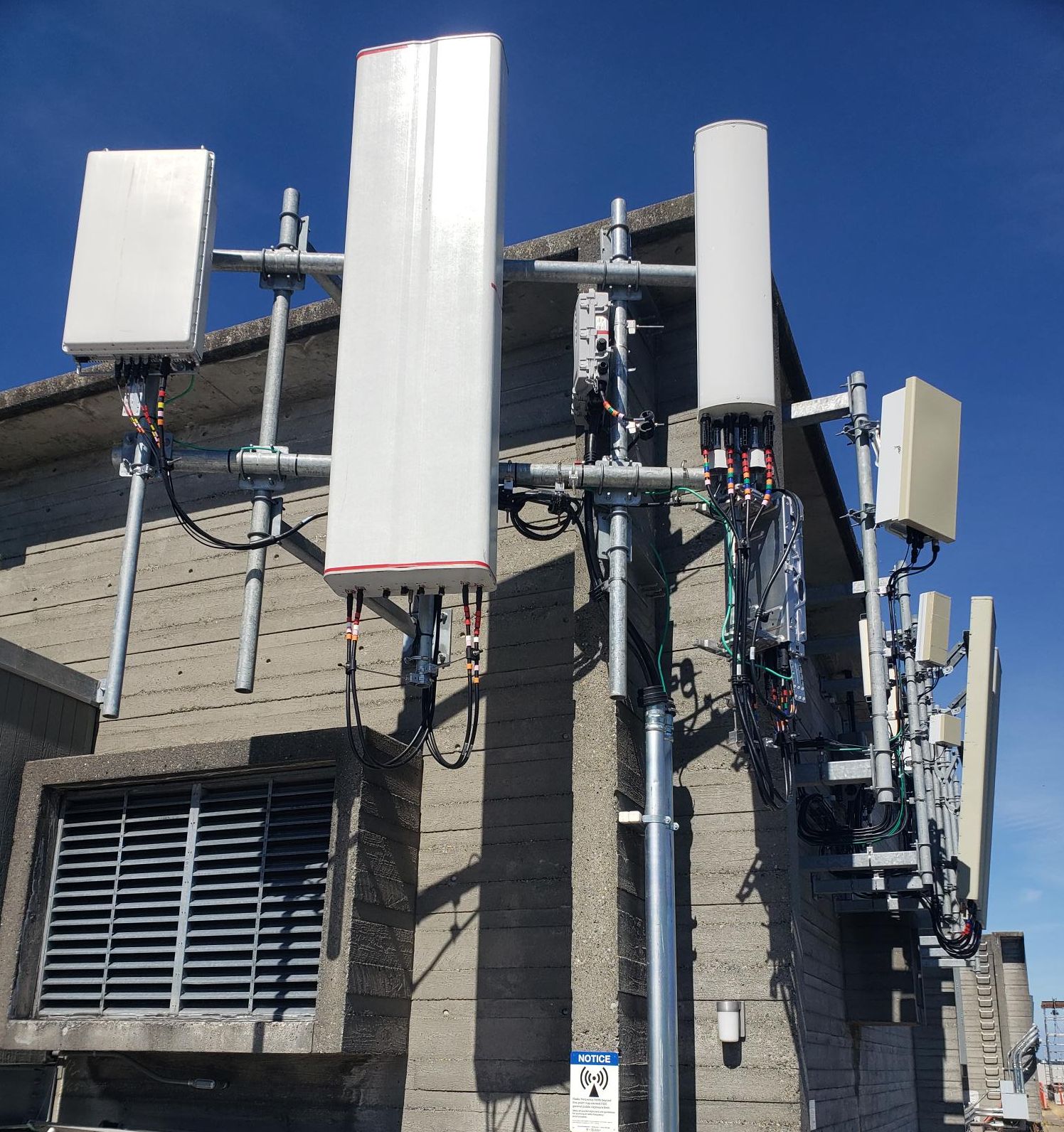Environmental Health and Safety (EH&S) published new guidelines for radiofrequency safety aimed at protecting workers who perform tasks on rooftops with wireless cellular antennas.
The key points of the new radiofrequency wireless cellular antennas safety guidelines include:
- Required radiofrequency radiation awareness training for all personnel before site entry;
- Authorization from building owner/manager/coordinator required for site access;
- Adherence to posted signs and barriers;
- Assumption that all antennas are active;
- Notification and disabling of appropriate transmitters before antenna work; and
- Maintaining a minimum distance of 3 feet from all antennas.
The new guidelines provide safe work practices tailored to specific locations where wireless cellular antennas are installed on UW building rooftops.
- 4545 Building, University District
- BB Tower, UW Medical Center – Montlake
- Chemistry Building, Seattle campus
- Discovery Hall, UW Bothell
- Lander Hall, Seattle campus
- Mary Gates Hall, Seattle campus
- McMahon Hall, Seattle campus
- Mechanical Engineering Building, Seattle campus
- Patricia Steele Building, Harborview Medical Center
- Physics Astronomy Building, Seattle campus
- Suzzallo Library, Seattle campus
The guidelines provide measures to safeguard workers from potential exposure associated with radiofrequency energy emitted by wireless cellular antennas. The guidelines emphasize the prevention of overexposure to radiofrequency radiation in the workplace and the importance of complying with the Occupational Health and Safety Act (OSHA) and the Federal Communication Commission (FCC).
University units and departments with personnel who work on rooftops with wireless cellular antennas are required to identify and assess areas that may be exposed to radiofrequency energy, as well as provide instruction to workers about radiofrequency hazards and preventative measures.
Visit the Radiofrequency Wireless Cellular Antennas webpage for additional guidance, links to training, resources, and more information.
Please contact EH&S Radiation Safety with questions.